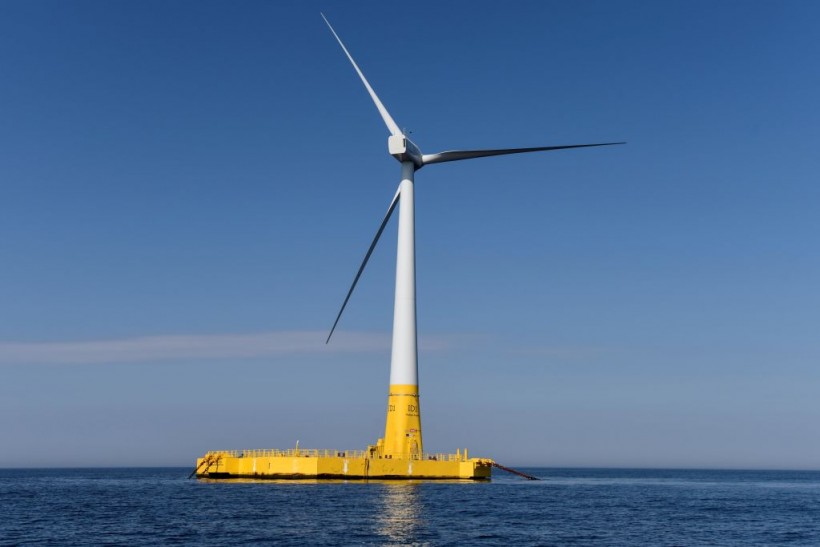World Wide Wind, a Norway-based company, is now developing a new type of floating Vertical-Axis Wind Turbine (VAWT), as reported by Interesting Engineering. Engineers believe that the VAWT can make a significant change in how wind power is harnessed.

(Photo : SEBASTIEN SALOM GOMIS/AFP via Getty Images)
The first floating offshore wind turbine called "floatgen" is pictured off La Turballe, western France on September 28 2018.
The VAWTs are equipped with two sets of contra-rotating blades that can produce double the output of the biggest turbines today, according to New Atlas.
What makes the VAWT a better option compared to traditional offshore wind turbines is that its heavy bits are all at the bottom, which can keep it upright. It acts as two VAWTs in one-a lower one rotates around the stem of the tower, while the higher one is mounted at the top. Each one can rotate in opposite directions.
One of the turbines is attached to the rotor, while the other one is attached to the stator. The stator doubles the speed of rotation, which enables it to produce more power.
The VAWT will tilt the wind and employ specially-designed blades that will help reduce turbulent wake downstream from each individual tower. Therefore, it will allow operators to fit more turbines into a specific area, thus, generating more energy.
Also Read: Offshore Wind Turbine Farm In Rhode Island Hasn't Harmed The Local Fish Population: Study
Massive 40-MW Capacity Per Unit
The company claims that its system can allow for a 40-MW capacity per unit, which is a lot bigger than the biggest wind turbine in the world today. The largest wind turbine is at MingYang Smart Energy, with a 16 MW capacity.
Currently, the company is working to boost the development of the VAWT through rapid prototyping. Their aim is to have a 3-MW model released by 2026 and the 40-MW model in 2029.
However, there is no supporting evidence or research released by the company regarding the output and efficiency of their VAWT. What seems to make it possible is the people behind them that can turn their plans into reality. The Norway-based company is in partnership with North Wind, Sinted, Uppsala University, Kjeller Vindteknik, Norwegian Energy Partners, and the Norwegian Offshore Wind Cluster.
With these people working with them, their plans to push these wind turbines by 2026 and 2029 don't seem far-fetched.
However, many people still wonder how long these wind turbines will last, since all VAWT blades are subjected to strong forces from every angle as they spin. There is no clear answer to this yet, and it's purely a matter of wait and see. Nevertheless, if it's successful, then it would mean great things for our renewable energy, and who knows? Eventually, we might be able to bid coal plants goodbye.
Related Article: Siemens Gamesa Works on Recyclable Blades, Could This Boost the Company's Overall Performance?
This article is owned by Tech Times.
Written by: April Fowell





